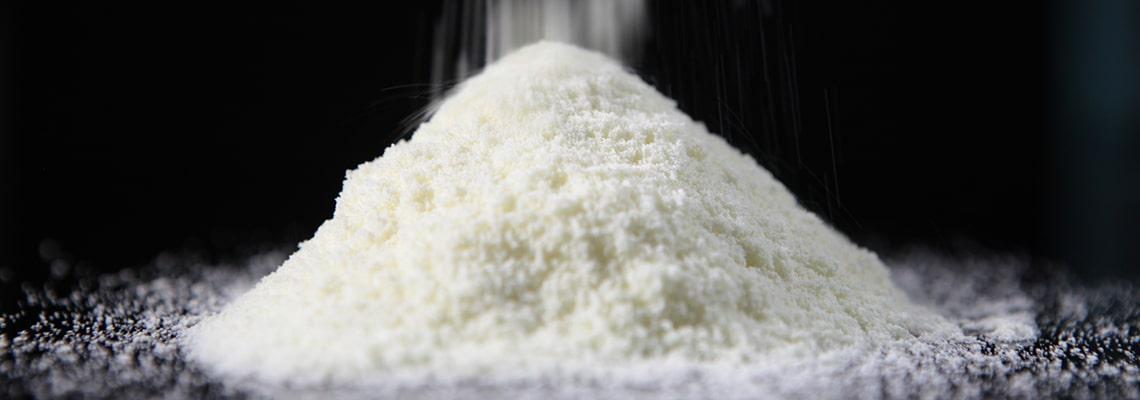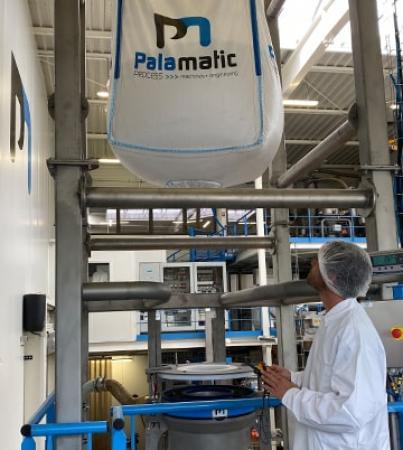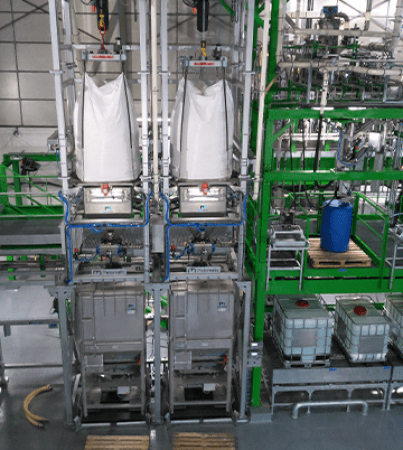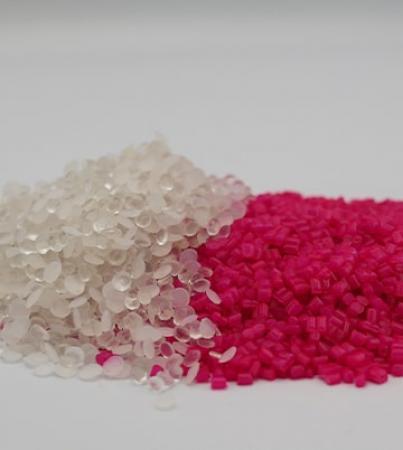1. Main characteristics of milk powder
Milk powder, whether derived from whole, skimmed or semi-skimmed milk, is the most manufactured form of milk and highest demand in the global food industry. Whether this milk comes from cows or goats, milk powder offers real advantages, particularly when it comes to its conservative quality.
Milk powder, also known as milk flour, is made from dehydrated milk. It can be sweetened (addition of glucose) or integrated with various additives such as vitamins, minerals or amino acids. Milk consists of about 87.5% water. The dehydration by evaporation and drying processes reduces the water content to 3%. Milk powder has the advantage of preserving all the proteins, mineral salts and fats, allowing it to be preserved over long periods up to one month. The production process requires the installation of infrastructures and processes that monopolize resources, know-how and technical expertise.
2. Main applications of milk powder
Milk powder is used in the production of many industrial products, especially dairy products such as cheese, yoghurt and infant formula. Milk powder is also used in bakeries and food production plants for mixes such as pancakes, cakes, dairy desserts or pastry products of all kinds. Finally, it can be simply stored for later use.

3. Industrial handling of milk powder
Processes and infrastructures involved in the creation of milk powder.
Before pasteurization, raw milk is tested several times to ensure that it meets the standards set by the control organizations and then standardized. First the milk and cream are separated, then the level of fat in the product is adjusted (fat content during this phase will equal quantities in the milk powder being produced) and finally cream is added depending on the desired end product. This standardized milk is then pasteurized. It undergoes a heat treatment at temperatures around 72°C in order to eliminate micro-organisms that are pathogenic to humans.
At this stage, the milk can be consumed within 1 week and the process of transformation into powder can begin. The liquid milk then goes through the concentrated process. This process, generally carried out under vacuum, consists of the vaporization of water from the milk and a transfer of heat (e.g., heating of the milk and latent heat for the evaporation and condensation of the water). This reduces the water content in the milk and prepares it for the next drying phase.
The drying phase therefore follows the evaporation phase. In the case of milk powder, drying can be carried out in two different ways. The choice of one or the other obviously depends on the characteristics of the initial product, but above all on the desired outcome of the final product.
The first possible method is spray drying. This is the most widely used technique in the dairy industry and consists of spraying the product to be dried (in liquid or suspended form) in a stream of hot gas (nitrogen or air). The liquid is sprayed in fine droplets in a drying tower (spray tower) in contact with a stream of hot air to evaporate water. The powder obtained is carried by the heat flow to cyclones (usually two: one static and one dynamic) which will separate the air from the powder with an output rate of about 3 t/hr. The second method is that of heated cylinders (or Roller process). The latter is a drying process by boiling. It consists in using vaporization to heat the product by conduction from a surface, heated by water vapor (in this case the surface of two rotating cylinders with horizontal axes). The product in liquid form is poured between the two cylinders. A thin layer forms on the rollers which, after drying out, can be removed with a scraper tool. The water vapor is evacuated by suction using a hood located above the rollers.
In all cases, the milk is in powder form at the end of the drying process. All that remains to be done is to sift and package the output product in the form appropriate to the customer's industry: big bag for industry, 20kg bag for professionals or smaller packaging for individuals
4. Applications of milk powder with Palamatic Process equipment
A consultation with a Palamatic Process specialist will help you develop a bulk bag packaging process in a hygienic zone (known as the "white zone") for your milk powder. This process consists of three points that accompany the powder from its creation through the drying phase to its packaging.
First stage: White packaging room
The objective of the installation is to design a packaging unit allowing the loading of milk powder in big bags and sacks, on the same station, without any risk of cross-contamination and external contamination.
The sack and big bag filling station is installed in a fully stainless-steel clean room, which ensures hygiene and cleanliness of the packaging at the exit of the production room. A set of SAS with overpressure management provides an ultra-clean atmosphere in the packaging areas. The packaging room is designed and manufactured by Palamatic Process, and is made of 304 stainless steel. All the conditioning equipment is "suspended" from the structure of the room in order to have no installations on the floor for easy cleaning procedures.
Outside the clean room a stainless-steel tank is positioned above the big bag and sack filling station. This Easy Clean Design buffer hopper is equipped with a product feed valve and has a capacity of 3,000 liters, controlled via the PLC. The hopper is equipped with a retractable bottom, allowing its inspection by the operator. The hopper can be disconnected on a diameter of 800 mm allowing ergonomic access to the operator. The articulation is made directly on the hopper feet. This access facilitates operator inspections after CIP phases, providing hygienic quality control.
An automatic extractable screw sampler ensures regular and automatic sampling of all production batches.
Second stage: Filling of big bags
The operator accesses the big bag spout and positions it on the inflatable seal.
The operator then controls the different filling phases of the big bag via the control box: the pre-forming fan starts and stops via a fixed time delay, the control of the opening valves of the big bag dedusting and inflating networks, as well as the authorization of the opening of the product supply valve. The pre-inflation of the big bag is conducted by a fan equipped with H7 G4 filters for an ultra-clean air supply.
The load cells inform the automaton of the big bag filling level, and once the set weight is reached (commercial weighing), the valve closes. At the end of dosing, the inflating seal is exhausted to allow the evacuation of the big bag.
Third stage: Filling the sacks
In order to ensure bagging, a 316L stainless steel product drop tube feeds the specific dosing valve. This system allows the user to cancel all dimensional constraints of the sack’s "openings". The inflatable seal and pressure ring system allows packing of any type of sack per the pinch system.
A sack filling mode is integrated into the PLC to ensure operator control. The Palsack® sack filling station is equipped with a weighing platform. A suction hood provides effective dust removal during the bag degassing phases. The palletization of the welded and sewn sacks is carried out by the operator via a vacuum bag manipulator.
5. Palamatic Process customer applications with milk powder
Since 1992, Palamatic Process has been assisting milk factories, mainly in the dairy and baby food industries, in their production by meeting the strict hygienic standards to which they are subject.
A number of installations have been installed and provide examples of their efficiency:
- A grinding line for milk powder
- A process for mixing ingredients for infant formulas, consisting of easily removable hygienic equipment
- Skid for the preparation and packaging of infant milk powder
To discover all the applications realized at our customers, please consult our case studies in the dairy and baby-food industries.

















